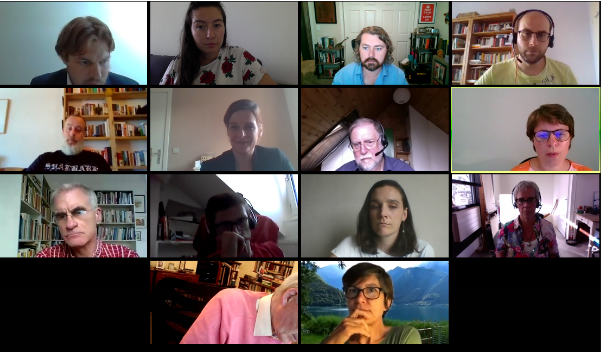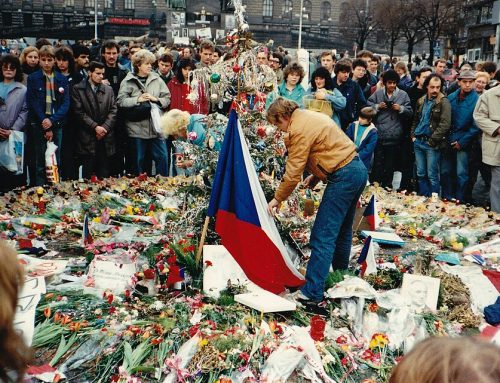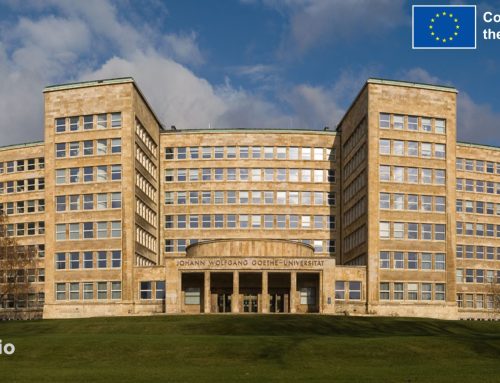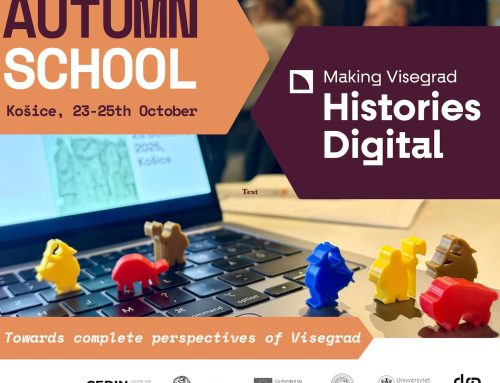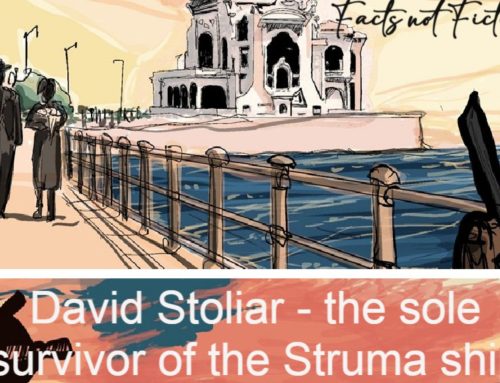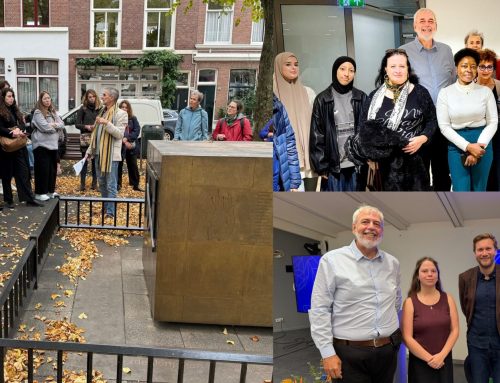Picture: The team catching up with each other.
The online Historiana Teams meeting took place on 21st, 22nd and 23rd August 2020.
This meeting, originally scheduled to take place at the House of European History, was held online due to travel restrictions. The meeting gathered our historical content team (Andrea Scionti, Christopher Rowe, Francesco Scatignia and Robert Stradling), teaching and learning team (Bridget Martin, Gijs van Gaans, Helen Snelson, James Diskant and Sean Wempe), concept, design and development team (represented by Nique Sanders) as well as our partners in the House of European History (Laurence Bragard and Constanze Itzel). The purpose of the meeting was to agree on the mode of cooperation between the different teams and organisations involved.
To kick off the meeting, Constanze Itzel presented on how the House of European History dealt and is currently dealing with the Covid-19 crisis. Particularly, she introduced the work of the museum on documenting the crisis by the museum itself and by other European museums.
Then, the teams were introduced to the latest developments made by the concept, design and development team as well as the implications for their future additions on historiana. The team is working on the ‘analysis’ which will be brought back to the e-activity builder. The tool ‘sorting’ is being updated with the possibility for users to add their own background and add labels. A final improvement is the introduction of an ‘instruction button’ for teachers to help guide their students through the activities. After these improvements are made the team will further develop the concept of ‘narratives’ as a way to present new historical content on Historiana.
The teams then discussed a possible re-organisation of the content listed in Historiana’s ‘Historical Content’ section under broader topics and themes. At the moment, Historiana hosts a number of source collections (shorter collection of sources curated and put in perspective on one topic), units (bigger collection of sources and material organised around one topic) and key moments (bigger collection of sources and material organised around one time period) in its ‘historical content’ section. The material available on historiana is constantly growing, making it sometimes challenging for teachers to find what they need. Consequently, organising the material available according to broader topics and themes should not only make it easier for teachers to find what they need, but it should also help display the great content that may sometimes be hidden on the platform.
To conclude Saturday’s meeting, the group was divided into breakout rooms to discuss and test a better way of working together across the different teams. This was needed to make sure that all the resources are built based on the expertise of both history educators and historians. The different smaller groups each tackled a different Source Collection and discussed possible ways in which the content could be adapted to help educators use it in an eLearning Activity and focused on different historical and educational themes.
Everyone gathered again on Sunday to discuss the next steps of a professional development course that Historiana will provide, as well as how to best involve our community in our work.
The next steps of the Historical Content Team will be to complete the research on which content is over- and under-represented. In addition, the team members will work on the development of new content that will make links to existing content (such as a unit about migration and partisans) or will correct the unbalance (such as a unit on Pandemics).
The Historical Education Team will provide their expertise to the Historical Content team in the development of the four new Source Collections, create eLearning activities for Source Collections that do not have any yet, and work on a series of Webinars to introduce more people to the creation of eLearning Activities.
The Concept, Design and Development Team will continue working on the development of the concept of ‘Narratives’ to present content in better ways. They aim to introduce different perspectives about one event in order to easily give access to a truly multi perspective approach on a given topic. They will implement the feedback received on the ‘help’ button in the e-activity builder and further the development of the ‘instruction’ button, the Analysis tool and the Sorting tool.Overall, this meeting resulted in a better understanding of the next step of cooperation, and on the setting of the priorities for the next period. We will inform one when the next updates are available and meanwhile, do not hesitate to go look at our multitude of resources on historiana.eu!

